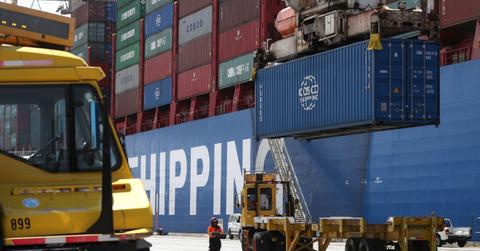Current Product Shortages and Supply Chain Issues Amid COVID-19
There have been product shortages and supply chain issues worldwide amid the COVID-19 pandemic. Which products have been facing a shortage?
Sept. 28 2021, Published 1:24 p.m. ET

The COVID-19 pandemic, in addition to the obvious impacts on health and the economy, has also brought extended delays and shortages of a number of commonly used products. These supply shortages highlight the global nature of our supply chains. Certain raw materials and products are usually only found or manufactured in a small segment of the world.
While certain supply chain disruptions are relatively common, they tend to be connected to a singular event like the Colonial Pipeline hack or a natural disaster. They also tend to resolve themselves quickly, within a few weeks or months. However, many COVID-19 supply shortages have persisted for multiple months with no end in sight.
Current product shortages
Some of the products that have been difficult for consumers to find and retailers to stock throughout the COVID-19 pandemic include exercise equipment, outdoor activity equipment, chlorine, and home office supplies.

Certain food products have faced a shortage partially due to a lack of enough truck drivers to deliver shipments of food around the nation. For example, child nutrition workers in Alabama spoke to US News about supply chain issues and shortages making it difficult to serve enough meals to school children while complying with nutrition guidelines.
Along with supply shortages, price inflation is also working against consumers and retailers. Prices of many grocery items like meat, eggs, and milk have increased. Forbes noted that furniture, appliances, clothing, energy, and gasoline prices have gone up.
Issues with shipping containers stuck in port are causing major delays in the global supply chain, which increases prices and results in product shortages. Forbes reported in August that as the holiday season approaches, popular products like home furnishings, electronics, seasonal clothing, and toys will likely be in short supply.
Construction supply shortage
Construction materials like lumber, paint, and hardware have been in short supply since the COVID-19 pandemic started. Reuters reported last week that builders are still struggling to increase production of single-family home construction due to ongoing supply and labor shortages.
A Wells Fargo senior economist, Mark Vitner, noted that supplies including windows, electric breaker boxes, cabinets, and wedge anchors are in short supply.
During the COVID-19 pandemic, lumber was one of the items whose price surged massively, although the prices have subsided in recent months.

Global chip shortage
Semiconductor chips are used in dozens of products with digital components from PCs and gaming consoles to cell phones and household appliances. Given the widespread use, companies haven't been able to keep up with demand for most of the COVID-19 pandemic, especially as millions of households purchased home computers for remote schooling.
The global chip shortage might not ease up until the second half of 2022, according to AMD CEO Lisa Su. She said at the Code Conference in Beverly Hills that several chip manufacturing plants that were built last year should start producing chips soon, which will help lessen the burden on chip makers to keep up with demand.
Last month, Toyota Motor announced that it would decrease its worldwide vehicle production by 40 percent in September due to the chip shortage. GM has also added “downtime” at several plants in North America and Mexico.
